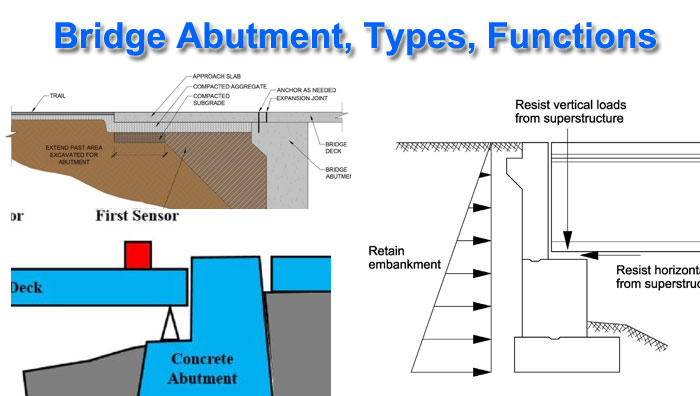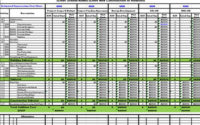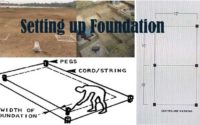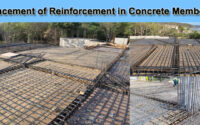Bridge Abutment | 7 Types of Bridge Abutment | Concrete Abutment
What is Bridge Abutment?
A bridge abutment is a substructure that supports one end of a bridge’s superstructure while also laterally supporting the embankment that acts as the bridge’s approach.
The abutment of a river bridge also shields the embankment from stream scour.
Abutments for bridges can be composed of masonry or reinforced concrete.
Gravity Abutment
The function of a gravity abutment is to prevent horizontal earth and water pressure with its dead weight. Such abutments have a very wide and substantial foundation.
The framework of the abutments is totally seated on the ground, and the abutment is sustained by the earth’s gravitational attraction.
U-shaped Gravity Abutment
This type of bridge abutment has wings that are perpendicular to the face and act as counter-forts. These are abrasions that are rather stable. The wing walls of an abutment are perpendicular to the bridge’s seat at a 90° angle.
A U-shaped abutment features a group of piles that are spaced at a distance equal to the bridge’s width. Reinforced cement concrete is used to build these types of abutments.
Cantilever Wall Abutments
A cantilever wall abutment serves two purposes: the first is to retain soil behind the bridge’s sides, and the second is to support the bridge superstructure. A retaining wall is one of the most common types of abutment structures. although.
A retaining wall is used to keep an earth embankment or water from eroding and to maintain an abrupt elevation shift. The following are the roles of the abutment:
Full Height Abutments
It is a large abutment that is built at the lower level of the roadway and is designed to hold the entire embankment. This is an expensive abutment that is typically used in congested urban and metropolitan locations when structural depth is crucial.
Full height abutments are more difficult to construct, but they reduce the length of the end spans.
Counterfort Abutment
The counterfort retaining wall is the same as the counterfort abutments. A thin wall called counterfort connects the breast wall to the footing in the counterfort abutment.
The breast wall is constructed as a supported slab rather than a cantilever, with these counterforts placed at regular intervals.
Stub Abutment
Stub abutments are cost-effective, but they tend to increase the length of the end spans. Additional wall abutments can be much taller, and they are frequently built to the full height of the crossing.
Spill-Through Abutment
The primary goal of spill-through abutments is to reduce soil strain on the abutment by creating massive voids in the stem.
The majority of the structure is below grade, with the exception of piers and spill-through abutments.
What is Concrete Abutment
The bridge’s ends are supported by abutments, which transfer loads from the superstructure to the ground. The bearing devices and backwalls are additionally supported by the abutments. Concrete is commonly used to construct abutments. Abutments come in a variety of shapes and sizes, including wall, stub, integral, and semi-integral.






